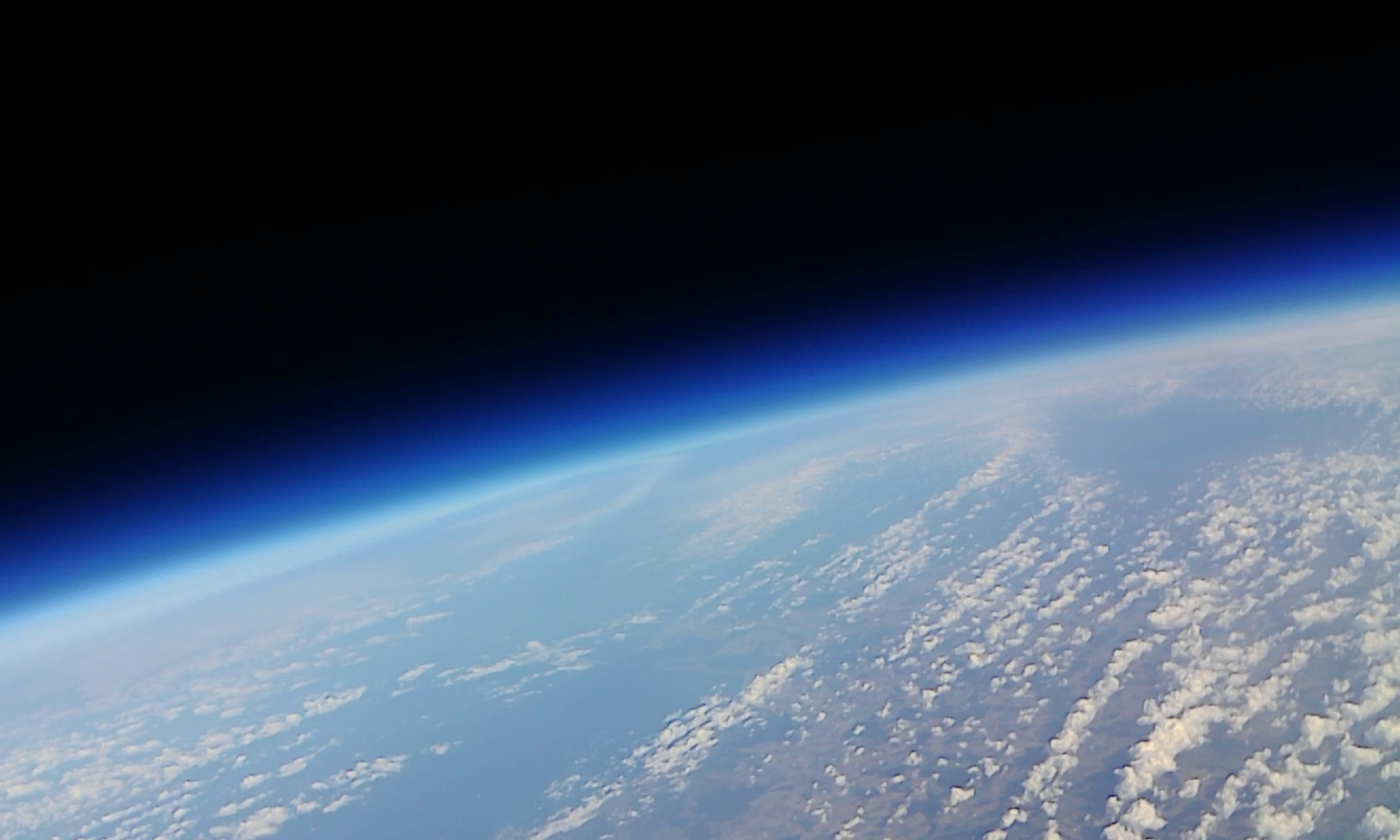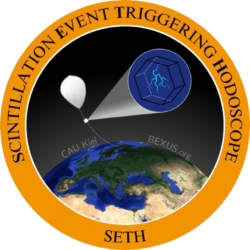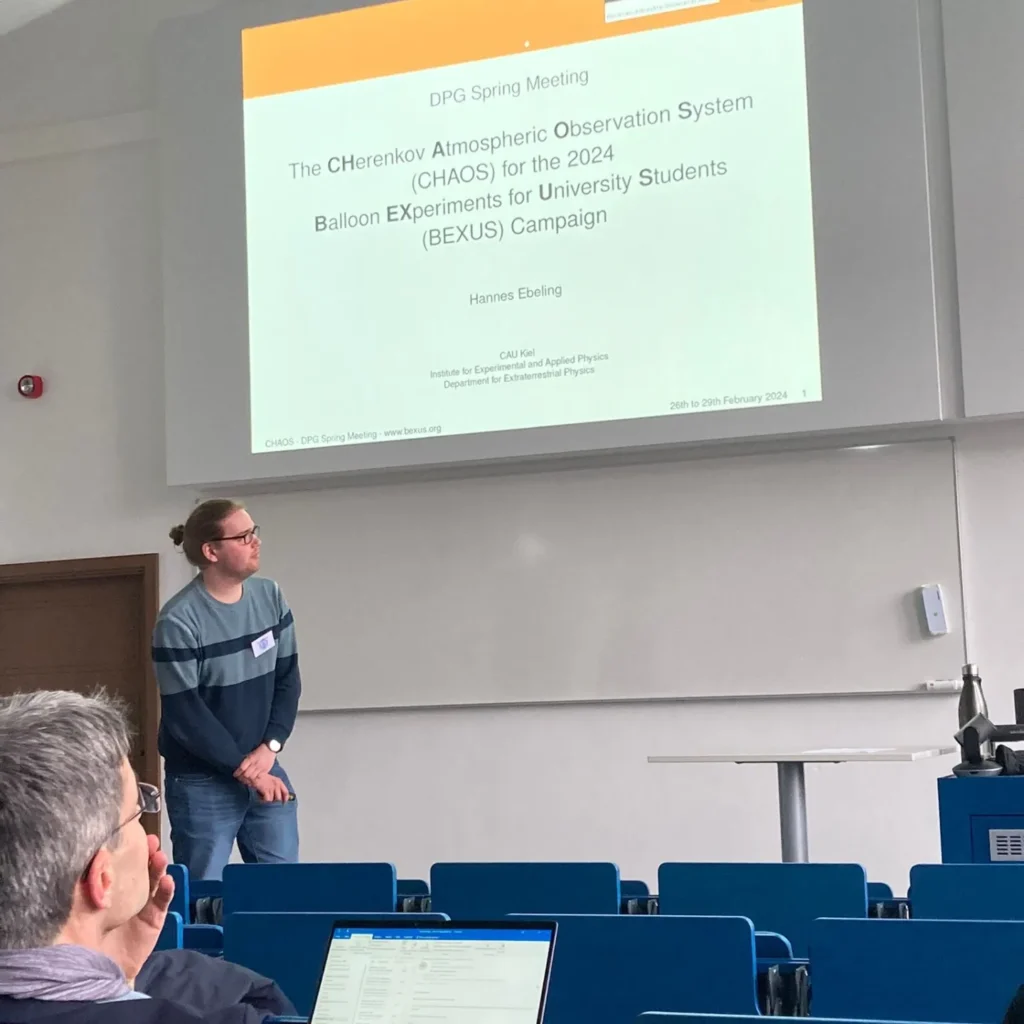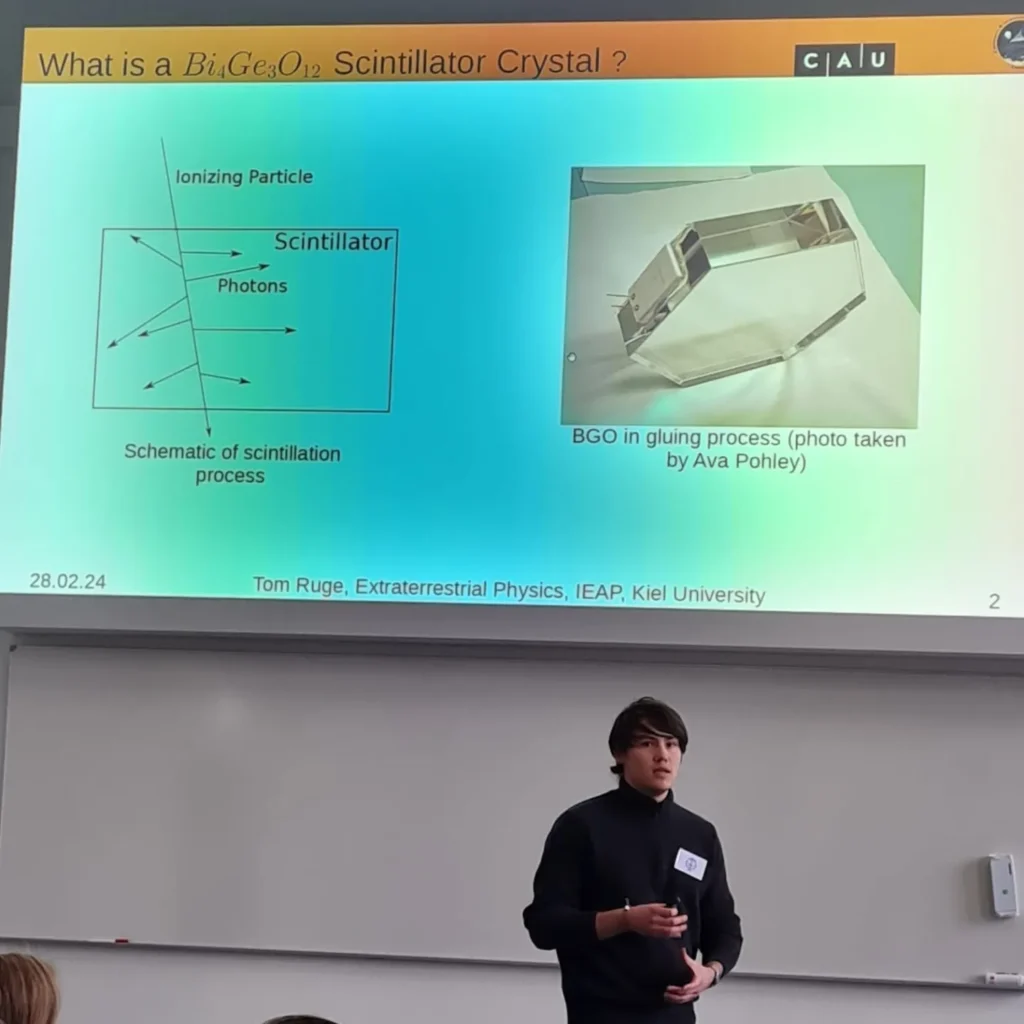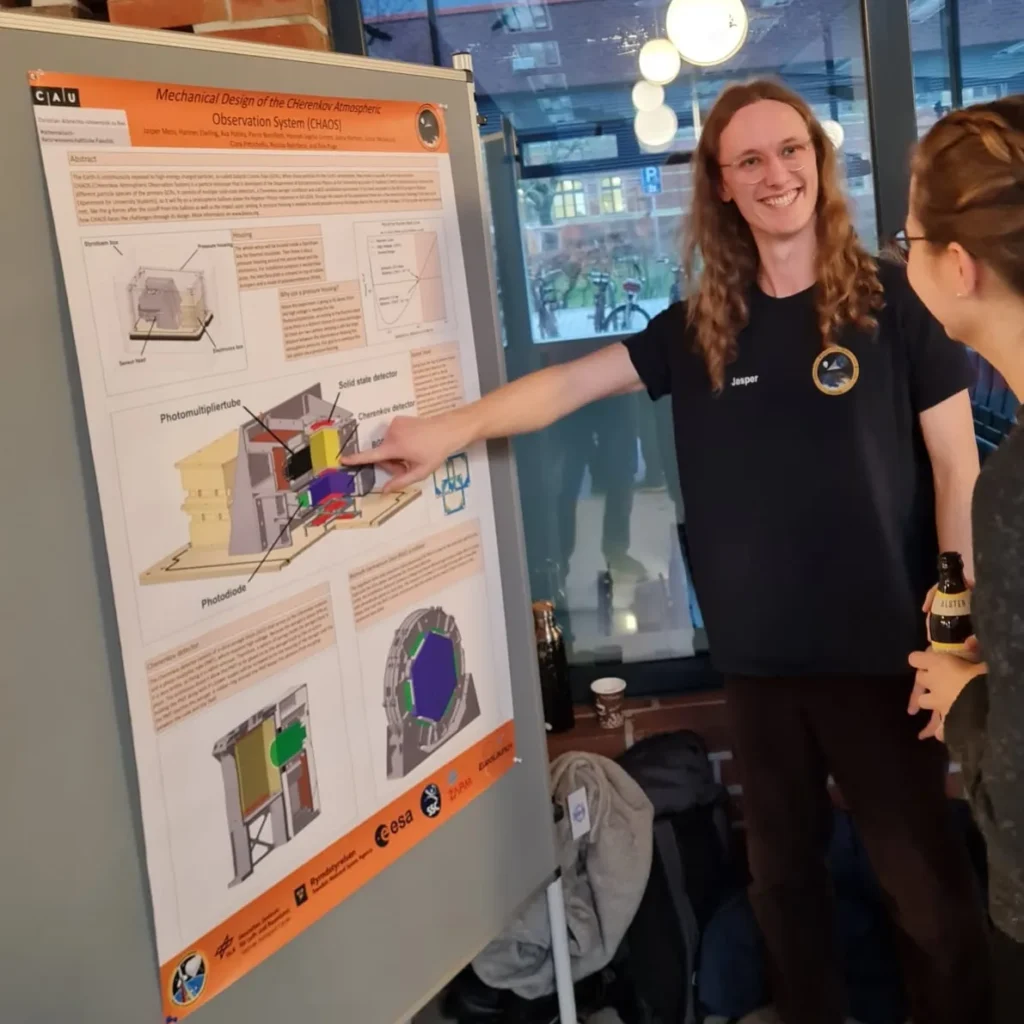A key component of our experiment is the bismuth germanate oxide (BGO) scintillator. Scintillators are materials that emit light when ionising particles pass through them, and deposit energy. This light is then complexly reflected and scattered until it is detected by the attached photodiodes. It is interesting to investigate the overall yield and the individual yield of the glued on photodiodes depending on where a particle flies through the BGO. This was done by a student in our team as part of his bachelor thesis.
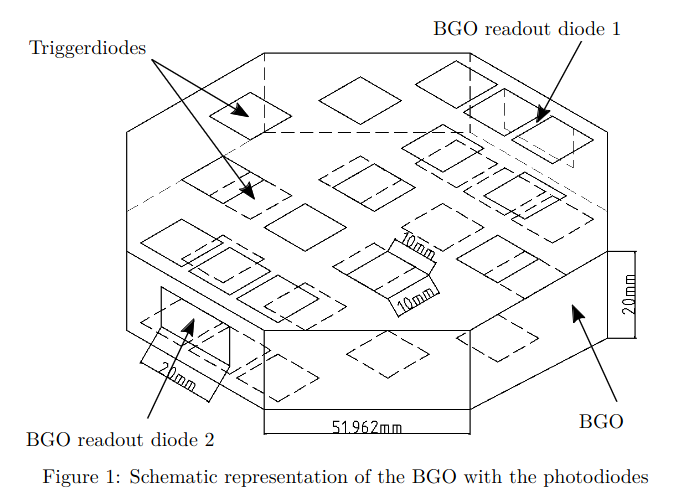
The focus was on a BGO with 2 photodiodes glued to two opposite sides. In order to be able to make a statement about the trajectories, 8 square photodiodes with a sensitive area of 10 mm x 10 mm were attached above and below, acting as trigger diodes. To ensure that the positions of the photodiodes were well defined, a frame was designed and then printed using a 3D printer.
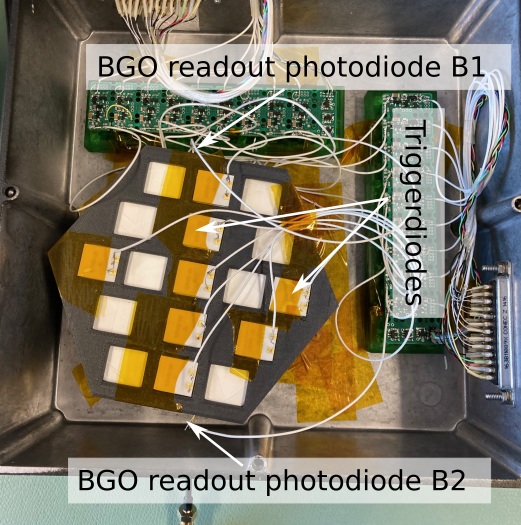
A 21-day measurement was carried out using cosmic muons at sea level as the particle source. The investigations revealed a rather strong trajectory dependent yield. Particles that fly very close to a readout photodiode through the BGO deposit significantly more energy in this diode via the scintillation light, while the readout photodiode further away sees a smaller signal. The measured signals are subjected to statistical processes. For comparison, the most probable value mpv is determined for each curve.
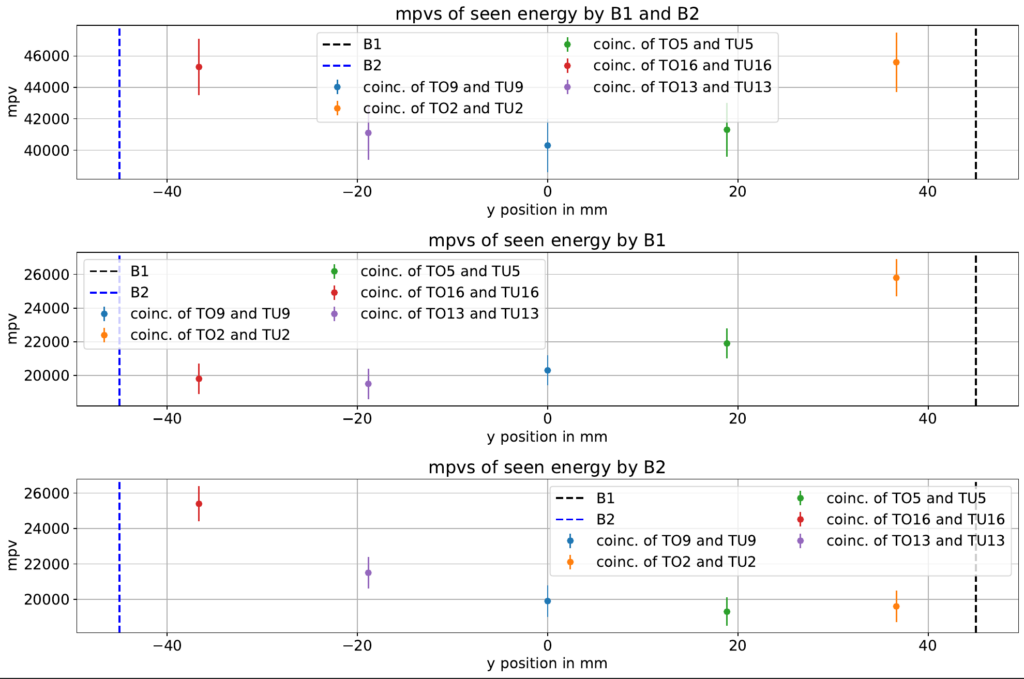
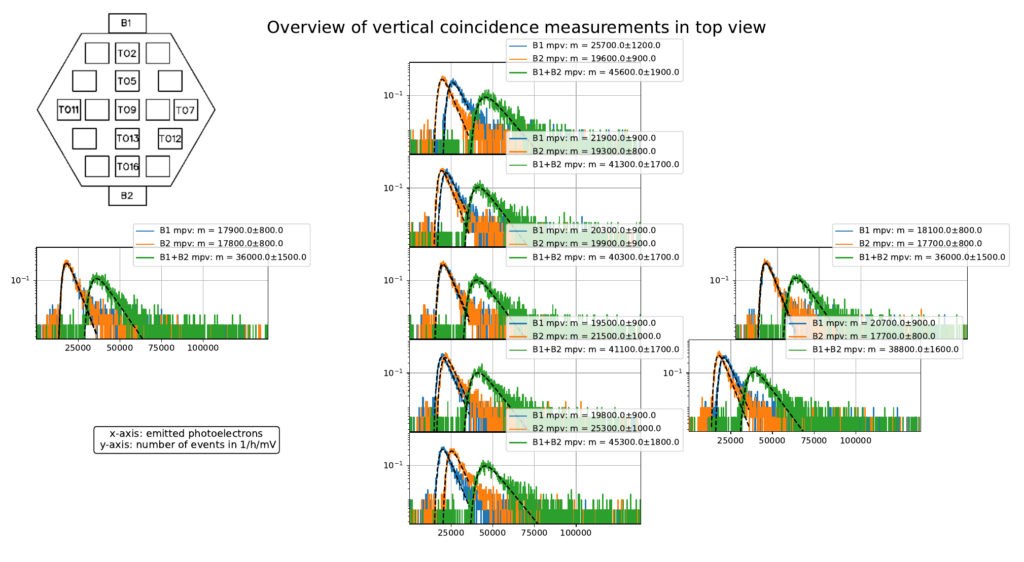
Another way of comparing the signals is to plot the signals from diodes B1 and B2 against each other. If both signals are the same, the points in a 2D histogram will lie approximately on a straight line with a slope of 1. If one diode has a stronger signal, the dots are shifted in one direction. If a particle hits the BGO in the centre, both diodes will see the same signal. If the hit is closer to one diode, the closer diode will see a significantly higher signal than the other diode. If the sum of the two signals were the same, this would not be a problem. But the sum of the signals is lower in the centre of the BGO (position 9) compared to the sides where the diodes are glued (positions 2 and 16).
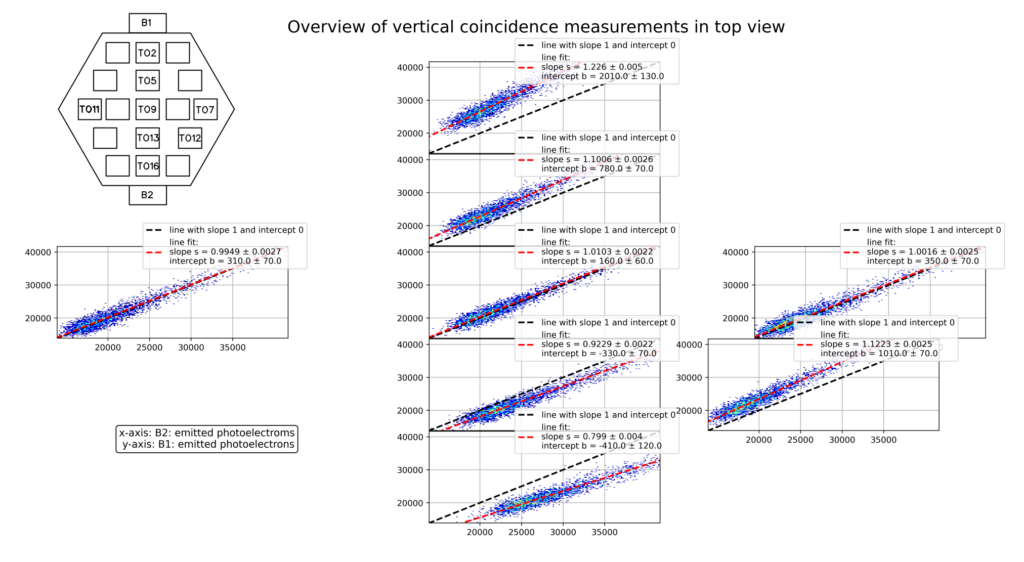
An even lower signal was detected on the sides where no diode is attached (positions 7 and 11). The strangest behaviour can be seen at position 12. Although readout diode B2 is closer to the particles with the corresponding coincidence, B1 has seen a larger signal compared to B2. A possible explanation would be that the photons generated were reflected at the side edge towards photodiode B1, resulting in a larger signal being measured.
An attempt was made to influence the photon paths in the BGO by roughening one of the side surfaces. No improvement could be seen, on the contrary, the deviations have increased. In order to cover the position dependency as well as possible, a BGO with 6 small diodes is currently being prepared and the measurements will be repeated.
